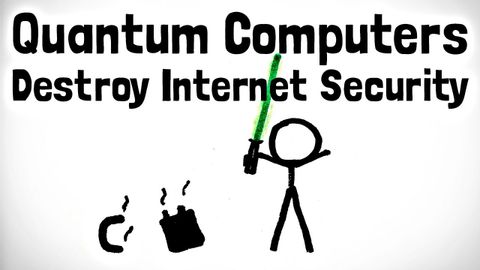量子计算机如何破解加密(How Quantum Computers Break Encryption | Shor's Algorithm Explained)
joey joey 發佈於 2021 年 04 月 29 日  沒有此條件下的單字
沒有此條件下的單字US /ɪˈvɛntʃuəli/
・
UK /ɪˈventʃuəli/
- v.t./i.出現;估計;我認為〜;認為
- n.身影;(計算過的)數量;肖像;圖;形狀;人物;名人;人影;數字
- n. (c./u.)通道;接近或使用的機會;訪問
- v.t.訪問
- v.t./i.存取(資料);訪問
US /ˈmʌltəpəl/
・
UK /ˈmʌltɪpl/
- adj.多重的;多種的;多發性的;多重的
- n. (c.)多;多個的;乘數
- pron.多重的

